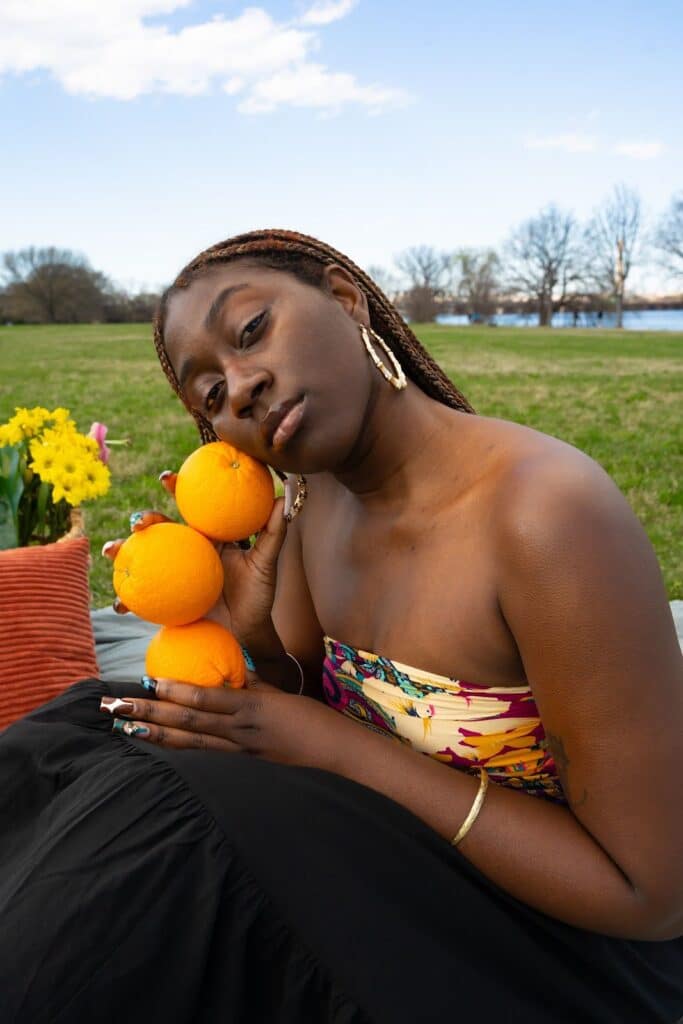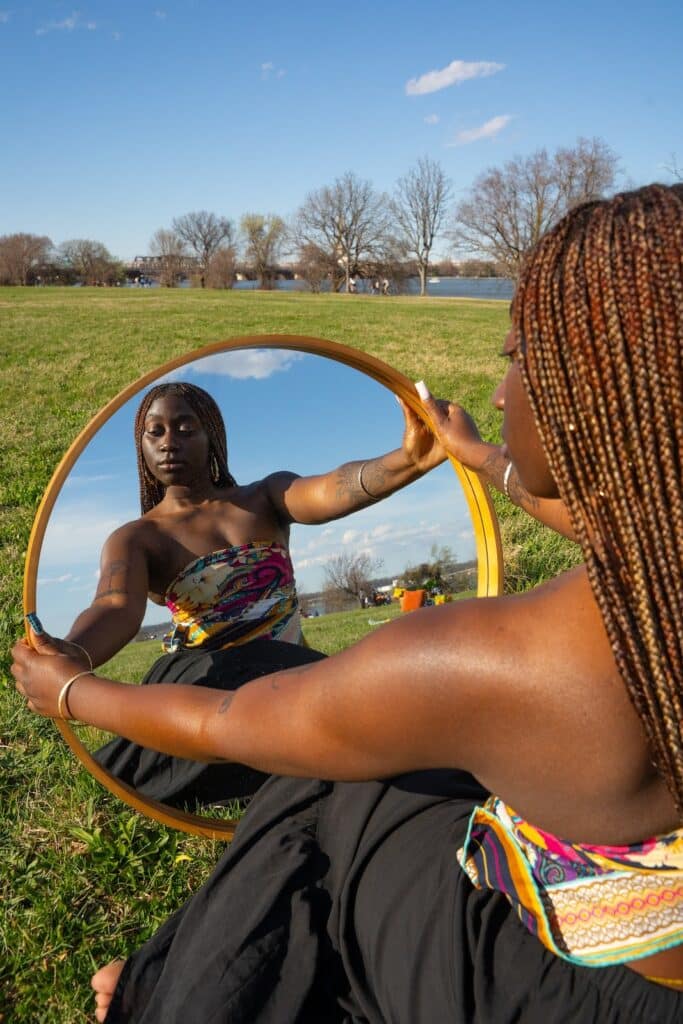
Catch Me Outside with my Dark Skin, Sapphic Gaze, and Feet covered in Soil
By Ki’Ana Speights
In this blog, Green 2.0 Fellow Ki’Ana Speights explores how their identity as a Black, Queer person intersects with the ecological world, and how they work to reclaim their space in nature. They dissect how White-heteronormative binaries were designed to exclude BIPOC people and make them feel othered. Through the lens of queer ecology, they imagine a future where society can accept and reflect the fluidity of nature.
I walk in a world that is hyper-focused on me, but somehow still finds a way to erase me. Yet, when I connect my feet to the ground of the Earth, soak my feet in the comforting soils and soft touches of the grass blades, I am reminded that the Earth holds me in all its graciousness. Here is an ode, a love letter to the Earth, to the natural world that it provides, constantly reminding me how I exist in a world of multitude and abundance, of powerful phenomenon, and on a spectrum of possibilities and outcomes.
With a Black, Queer, and Genderqueer identity, I should be deterred from the White-heteronormative and binary structured ecosystem of society that has been constructed and monopolized over time. I am in a constant venture of reclaiming the natural world that holds space for me in a world that is consistently trying to exclude and erase my existence.
Happiness to me feels like placing my comforting but anxious hands on my face, closing my eyes, and allowing the breeze to dance around my body, while inhaling the aromatic scents of florals that nature exhales. When I walk beside nature and its entirety, I spot something new. I’m continuously noticing, observing, and watching plurality at its finest, consistently at its most elegant, and receiving the unpleasantries that coexist.
I am at my happiest when I am watching the natural curves of a body of water flow, and being guided by the natural infrastructure around it to its next destination. Or being able to breathe deeply, listening to my surroundings as it sings to me, while soaking up the rays of the sun, and allowing the depression caused by the harms of the world to lift from my body and wash away at my feet.
“But in all my time wandering I’ve yet to have a wild creature question my identity […] Responses in forests and fields are not born of any preconceived notions of what “should be.” They lie only in the fact that I am.“
The Home Place by Drew Lanham

So, how come when I step out of a natural world that seems like a fantasy, euphoric, I then step under a magnifying glass just to feel the harsh burns and disgust of my existence? Due to living in a binary, White-heterosexual horrorland, the horrorland that we know as everyday life, there are rules and restrictions placed on my existence. Binary White-heteronormative societal spaces doesn’t leave any explorative opportunities to evolve into or room for transformation, only for obedience and standardization.

What would it look like to break free of those barriers, and resist chains placed upon our existence? How would it feel to rethink who owns space, while acknowledging the hurt that has been caused through natural spaces?
“The binary doesn’t need to be destroyed, but rather blown open and expanded to reflect the complexity of our ecological and celestial kin”
Queer Nature on Reclaiming Wild Safe Space
I call in the knowledge of queer ecology, intersecting queer theory, and ecological knowledge and systems, that shift away from the binary that has contaminated what we know to be ecological science and understanding. This understanding of queer ecology helps break down dominant heteronormative thought that aims to mold our perception of what is natural vs not natural, and uses this as a justification for the erasing of identity and existence that lies outside of White-heteronormativity.
This conception of understanding is known as culture boomerang, “We interpret nature based on our inherent biases and use our biased understanding of nature to defend and justify those societal biases we have.” Using queer ecology as a framework for understanding the natural world, through diversity and fluidity, will we then understand we can not let White-heteronormative thinkers and its followers tell us how to exist in a natural world that depends on possibility and chance.
In a world in need of diversified voices, spaces that yearn for inclusion, and the access to create equitable possibilities, we can use the natural world as an example of the acceptance of plurality, fluidity, and queerness.
“Queerness is not another venue for the simulation of human exceptionalism and White supremacy that serves the project of settler colonialism. It is a devotional practice of decentering our humancentricism to continually expand our co-liberation and remember that our queerness is a disruptive/remediative fruit of the earth”
Queer Nature on Reclaiming Wild Safe Space


Connect with Ki’Ana on LinkedIn to keep in touch with their work at Green 2.0 and beyond!
